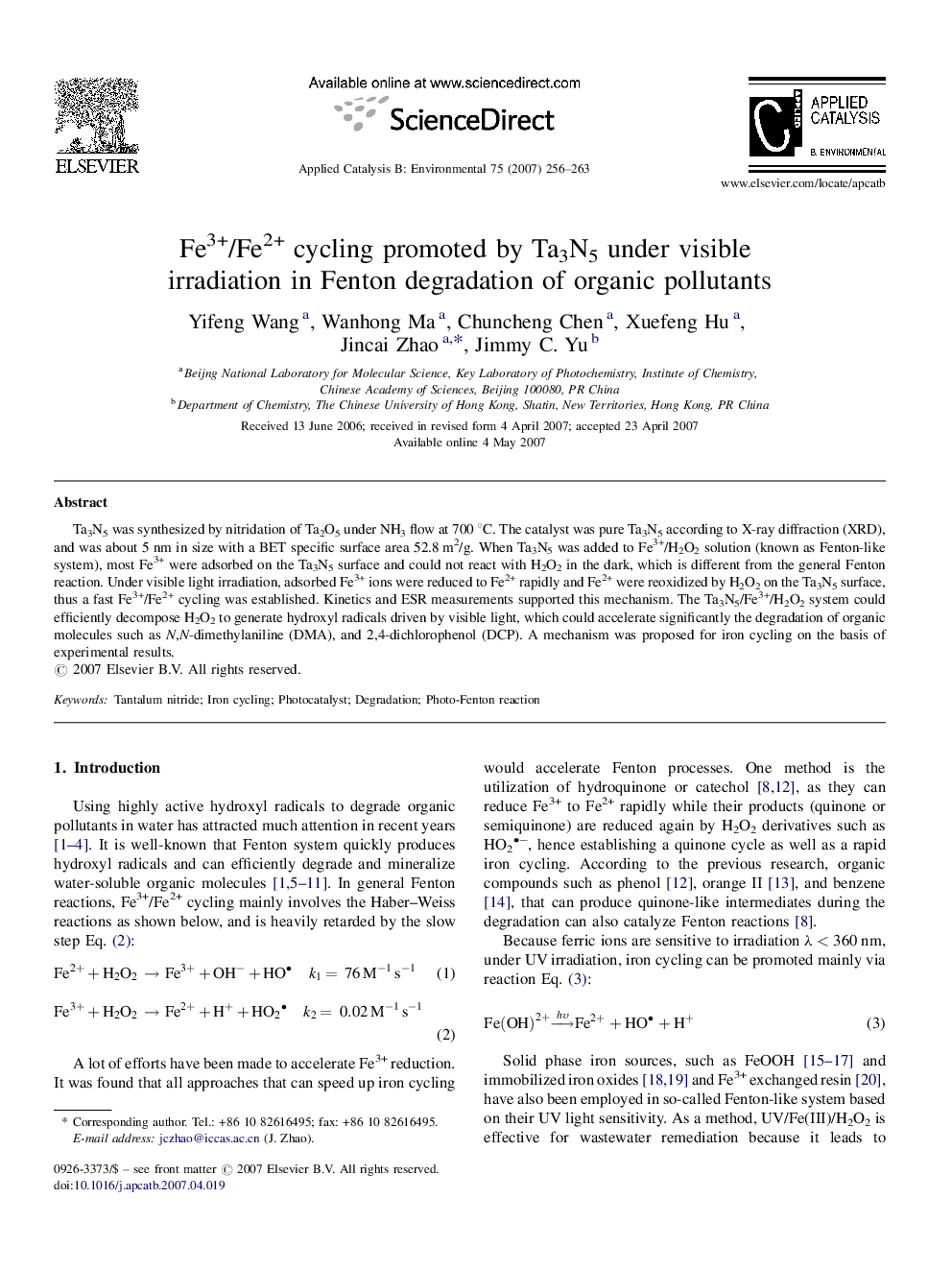| Article ID | Journal | Published Year | Pages | File Type |
|---|---|---|---|---|
| 48553 | Applied Catalysis B: Environmental | 2007 | 8 Pages |
Ta3N5 was synthesized by nitridation of Ta2O5 under NH3 flow at 700 °C. The catalyst was pure Ta3N5 according to X-ray diffraction (XRD), and was about 5 nm in size with a BET specific surface area 52.8 m2/g. When Ta3N5 was added to Fe3+/H2O2 solution (known as Fenton-like system), most Fe3+ were adsorbed on the Ta3N5 surface and could not react with H2O2 in the dark, which is different from the general Fenton reaction. Under visible light irradiation, adsorbed Fe3+ ions were reduced to Fe2+ rapidly and Fe2+ were reoxidized by H2O2 on the Ta3N5 surface, thus a fast Fe3+/Fe2+ cycling was established. Kinetics and ESR measurements supported this mechanism. The Ta3N5/Fe3+/H2O2 system could efficiently decompose H2O2 to generate hydroxyl radicals driven by visible light, which could accelerate significantly the degradation of organic molecules such as N,N-dimethylaniline (DMA), and 2,4-dichlorophenol (DCP). A mechanism was proposed for iron cycling on the basis of experimental results.
